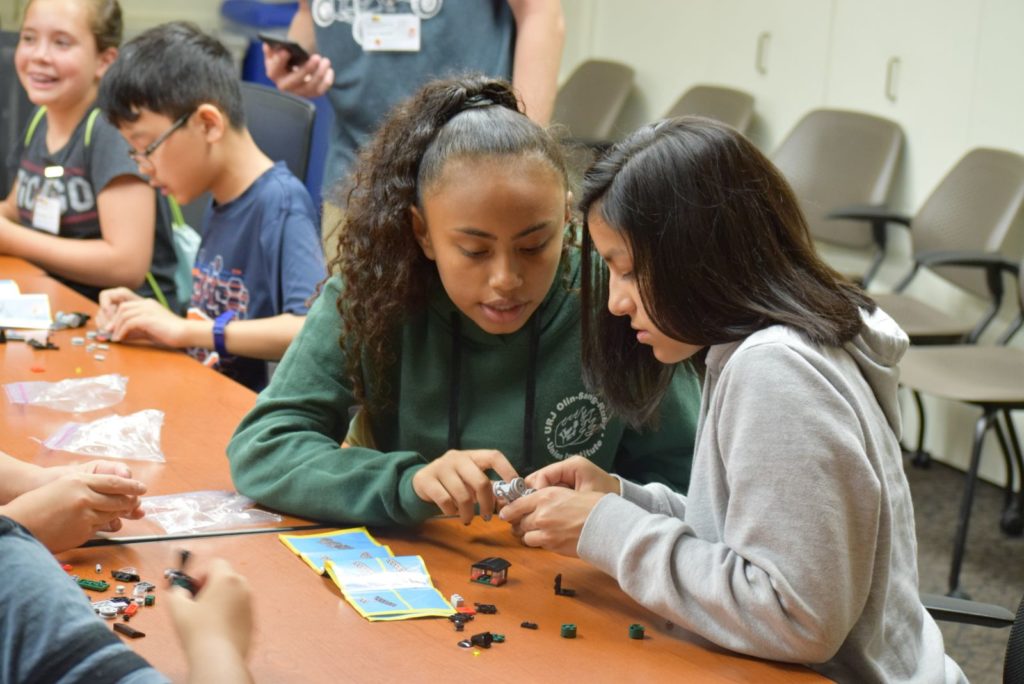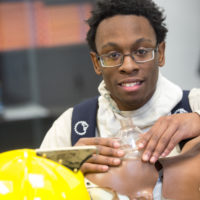
Recently, I shared some thoughts about how important the right conditions are for student-directed learning, following up with how to assess if conditions are “delicious” enough for adults to direct their own job-embedded learning too. With a new school year underway, it’s a good time to go deeper.
Let’s say you are questioning whether conditions are “delicious” enough in your classroom for students to engage with their projects in a self-directed, ambitious way. What happens next?
Whether a student is failing, struggling, or just barely sliding by, educators understand the rich toolkit of steps and strategies to intervene, monitor, and support students, whether the challenges are academic, behavioral, or otherwise. Most traditional interventions focus on the needs of individual students. However, humans are also social beings: the relational context and culture of the group might also—or might mostly—be in the way. If this is the case, individual instructional or behavioral intervention won’t be enough, because the problem is more complex, involving more variables.
Human systems interventions adapt the collective norms of the group so that improved outcomes—especially for those farthest from opportunity—become more likely. Dr. Atul Gawande, a surgeon and medical essayist, calls these “Slow Ideas”—the kind where improvement depends on “a system and a culture where X is what people do, day in and day out, even when no one is watching.” Direct methods—asking nicely, making great arguments, policing and punishing, incentivizing—won’t work if the group considers the current behaviors normal. To get something new out of an old system, you need new norms. And as Dr. Gawande references, changing cultural norms is indeed slow work.
Here at ConnectEd, we consider the Complex Instruction strategies (developed by Rachel Lotan, Elizabeth Cohen, and their colleagues at the Stanford School of Education) a great on-ramp for human systems intervention to make learning environments more “delicious” for student-directed learning. Complex Instruction requires teachers to first understand, then intervene to improve, three relational components present within learning environments:
-
- CURRICULUM: Groups will work hard on tasks they believe are worth hard work. Task are “group-worthy” when they match students’ interests, invite multiple solutions, demand higher-order thinking, and require multiple perspectives. Group-worthy tasks are not easy to design; the best examples tend to be found embedded in projects (such as within ConnectEd’s and other linked learning project-based curriculum (see the College & Career Academy Support Network curriculum database and the SCALE performance assessment task database). Of course not all teachers have the autonomy to incorporate the skill set to support group-worthy tasks in their classrooms. It is critical for those who support teachers—coaches, leaders, and professional developers—to help identify and remove these curricular barriers for teachers.
- NORMS and ROLES: Competitive, individualistic behaviors are still the norm in U.S. schools. Unless supported to do otherwise, groups tend to distribute roles based on pre-existing assessments of who is and who is not smart. To intervene, teachers need to first clarify the behaviors of equitable teams, then support students to practice new norms. Many educators are “dentists without cavities”—the existing norms worked well enough for us—which means teachers and administrators will need similar support from their professional developers. It is critical to take a strengths-based approach to observation and feedback, highlighting what is present (so a learner knows where to focus or keep building), versus the more familiar deficit-based approach, highlighting what is absent (so a learner knows what’s wrong—but rarely what to do next).
- STATUS: The more students talk and work together, the more they learn. However, students judged as lacking skills often fail to participate, and therefore they learn less in groups (you can see how this works in this classic video). Status interventions require teachers to recognize a broad range of intellectual capacities demonstrated by students, and to use their status in the classroom to elevate unacknowledged strengths of marginalized students. These are uncommon skills. Educators who have internalized traditional notions of academic intelligence, whether as “winners” or “losers,” may need extra support.
You may have noticed how closely these interventions align to the work of linked learning pathways implementation. If so, you also know how much time, leadership, and professional learning it takes to bring about the smallest changes in a team or school—even when everyone is 100% on board. This is to be expected, because systems improvement moves at the pace of human relationships—at the speed of trust, according to Franklin Covey.
All students deserve relevant learning experiences, in conditions that foster equitable interactions and relational trust. Educators deserve the same as they learn on the job. In my experience supporting linked learning schools and districts to implement high quality pathways, intervening in human systems may not make improvement move faster, but it can help improvement to spread wider and more deeply. That’s because when human systems improve, human experiences improve. Learners want to feel safe to ask questions, be curious, and give and receive help—but they won’t take the risk unless the system is safe to learn this way. As a network teacher explained, reflecting on her intervention to address status challenges in groups, “they know their group is relying on them, and it’s a team effort now, you can’t leave anybody behind, and they’re always willing to help each other; my role as a teacher is just to facilitate learning—it’s so much more powerful when they can figure it out themselves.”
-Jennifer Lutzenberger Phillips
“Delicious” Interventions for Learner-Directed Environments (Part 3)
How important are the right conditions are for student-directed learning?
Why Going for the Gold (Certification) Matters
As students return for the new school year, ConnectED looks forward to working with our school, district, and community partners around a shared belief: all students deserve the right to a great education. We’re working in communities across the country to challenge the status quo so that students become more inspired and better equipped to […]
How “Delicious” is Your Learning Environment—for Adult Learners? (Part 2)
In a recent blog post, I suggested that those who doubt students’ ability to direct their own learning because “you can lead a horse to water, but you can’t make him drink” might want to focus not on the horse, but what he’s being urged to drink. Students are more likely to try ambitious, self-directed […]
Can Linked Learning Work in Rural School Districts?
Friends, Parents, teachers, community members and anyone in the Linked Learning field have all seen the transformative effect that Linked Learning has on students, especially in some of the biggest, most challenging school districts across the country. We know that when students love what they’re learning, they work harder, dream bigger, and learn more. As […]
Bringing Together School, Work and the Wider Community
Colleagues, Making learning real and relevant is a big part of what we, in the Linked Learning field, do. We do this because we’ve seen, through research and testimonials, that when students are able to apply what they’re learning through professional pathways and experiences, their connections are deeper and they retain more of what they’re […]
How “Delicious” is Your Learning Environment? (Part 1)
When you picture students directing their own learning, what comes to mind? In my long career serving students far from the center of opportunity, I’ve grown as a professional by working with skillful colleagues, in schools built around a core of career-themed, work-based application. In these schools, the teaching expectations included real-world problem solving, where […]
Lessons from the 2018 Linked Learning Alliance Convention
We were honored to meet and get to know so many of you at this year’s Linked Learning Alliance Convention in Anaheim, and to learn from colleagues new and old. In the spirit of sharing lessons across our field so that every student can be better prepared for college, career and life, please find links […]
Your Generosity Makes Our Work Possible
Since 2006, we have walked this journey, hand-in- hand with more than 45 school districts across the nation, corporate partners, policy makers, government, local and national funders and donors. Through your support, each of you has affirmed the transformative power of a Linked Learning education. In this rapidly changing environment of a global and digital […]
Reimagining Career and Technical Education
In my work as President of ConnectED, I meet with a lot of teachers, district leaders, superintendents, and community members. There’s something we all agree on: every child in this country deserves the right to a good education—and we’re failing to provide that opportunity to far too many students. In our sector, we see many […]
Letter from the President
As the new school year gets into full swing, there are more than 300 Linked Learning Pathways in more than 55 districts across the country. Today, Linked Learning is reaching more kids than ever before. This matters—not just because of numbers, but because of who we are serving. Linked Learning is for all students. Linked […]
)





